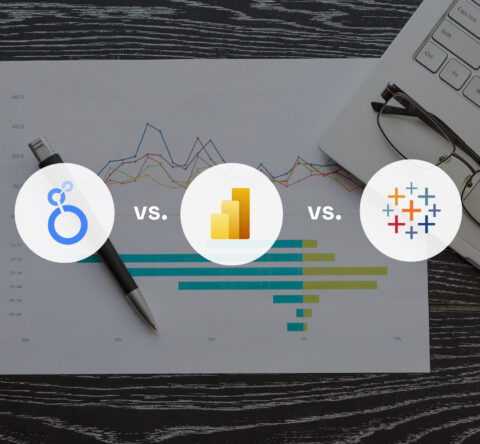Google constantly updates its search engine algorithms to surface its users’ most valuable and relevant content. To stay ahead of the curve, brands must stay informed about Google’s latest updates and recommendations for pillar page strategy for SEO.
The topic cluster model is built on a hub-and-spoke framework where each of the clusters has three essential components:
- One broadly-focused pillar page: This refers to high-level content that is focused on the main topic and links out to the articles written on the specific subtopics. Each of such pieces on the sub-topics is more detailed and emphasizes that relevant topic.
- Multiple in-depth cluster pages: As discussed in the previous pointer, cluster pages focus on the sub-topics of the pillar page content. There are multiple cluster pages for a single broadly-focused pillar page. And all such pages only contain the content on the respective subtopics.
- Strategically-placed internal links: The internal links are meant to link back to the pillar page from cluster pages that share the same topic and also between cluster pages. This gives an indication to the search engines that the pillar page is an authority on a particular topic, and the pillar page may rank better for the topic it covers.

Here, we’ve compiled a list of best SEO practices for crafting pillar pages and topic clusters that support better topical coverage within your site structure. Let’s start from the basics before we dive in!
What is a Pillar Page?
The key pages on your website are called pillar pages. There are certain things to know about pillar page SEO. They are the cornerstone of your content strategy and should be the most thoroughly researched and well-written pieces of content on your website.
Whether it’s an Article or a Product/Service page, these pages serve as the primary entry points for your customer journey and should be prioritized for their content quality.
Pillar pages exist for various reasons – from branding and trust building to education and customer acquisition. Ultimately, the goal of a pillar page is to help inform your customers and direct them to the next step in the buyer’s journey.
Why Are Pillar Pages Important?
The primary content of your website depends on pillar page SEO. They are usually the most frequently visited pages on your website, meaning they often fall victim to Google’s Panda algorithm changes. Because of this, SEO experts have been urging brands to increase their focus on creating SEO-friendly pillar pages (both in terms of content and structure).
Pillar pages, like product pages, are often the most clicked on eCommerce websites. They can significantly lose visitors and sales if they are not optimized for search engine traffic. One study found that low-quality product pages could cost retailers $2.75 billion in lost revenue each year. There are several pillar page strategies for SEO which can help rank a website on google.

How to Create a Pillar Page?
You’ll want to follow a few of the pillar pages best practices. But before that, you should know more about pillar pages and topic clusters. Once that is clear, you can start exploring how to create a pillar page.
- For each topic cluster, you’ll want to create a “parent page” for that cluster. This means you’ll make one page that serves as a hub for all the subtopics within that cluster.
- Next, create sub-pages for each of the topics within the cluster. Utilizing the “link to page” feature on your WordPress dashboard will make this simple for you.
- Please select the topic you want to link to and then the subtopic you want to link to below. This will automatically create a link that you can use in your content.
- To make the page even more helpful, you can create an index page or table of contents. This will allow you to list all the subtopics on a single page so that readers can easily find what they’re looking for.
Why are Topic Clusters Important?
Topic clusters are closely tied to pillar pages. Topic clusters are collections of subjects that are connected by a common keyword. For example, if you’re a health and wellness brand, your top 3 “topic clusters” might be Exercise, Nutrition, and Mindfulness.
These topic clusters are then used to create content for your website, from blog posts to FAQ pages. To develop these “topic clusters, ” you’ll want to brainstorm a list of relevant keywords and topics your audience might search for online. One needs to keep some of the pillar pages best practices in mind.
How to Create Pillar Page with SEO-Friendly Topic Clusters?
Like pillar pages, you’ll want to follow a few essential pillar pages best practices when designing topic clusters.
- First, you’ll have to make each topic cluster “topic rich,” – meaning each cluster should be closely related to 1-2 keywords/topics. You must already know about pillar pages and content clusters by now.
- Next, you need to focus on unique and SEO friendly content that serves high value to the customers. You’ll want to include content that is “authoritative.” This means that your content should be written in a way that Google recognizes as highly accurate and reliable.
- And finally, you’ll want to “build links” to your pillar pages. This could mean including links to your pillar pages in your content strategy or linking to your pillar pages from external sources.
- The additional pillar page includes best practices to keep in mind when creating. Be sure to create pages for broad topics. For example, if you’re creating an encyclopedia about carpentry, you’ll want to create a page for “wood.”
Conclusion
Like any other type of content, pillar pages and topic clusters need to be created with the user-intent in mind. They should be easily digestible, helpful, and actionable. They are the pages your customers are most likely to visit, so they must be optimized for search engines.
If you follow these tips, you can ensure that your pillar pages and topic clusters are well-written, easy to navigate, and, most importantly, useful for your visitors.
For such trendy blogs, you should visit GTECH, a reputed content marketing agency in dubai.
Related Post
Publications, Insights & News from GTECH








